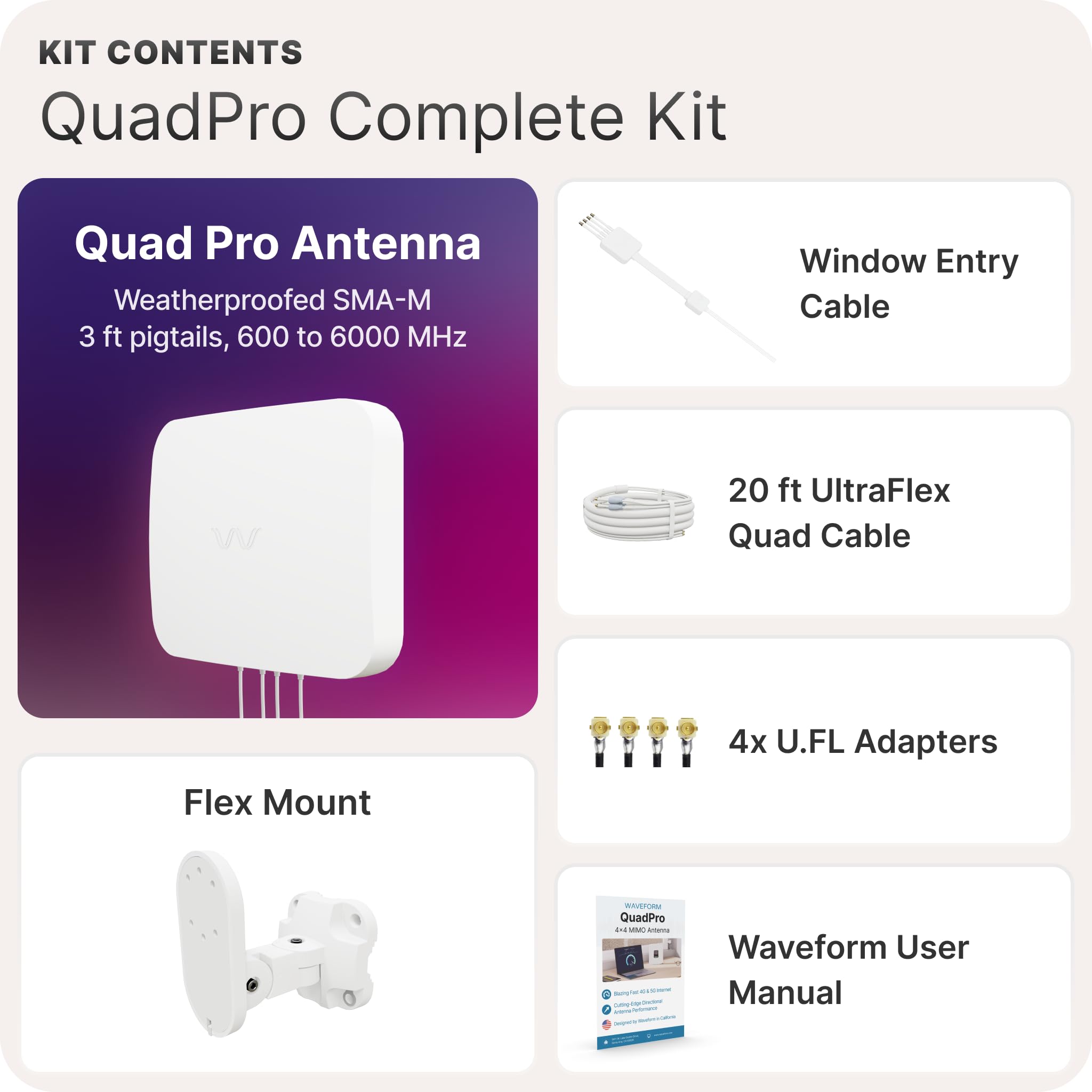Customer Services
Copyright © 2025 Desertcart Holdings Limited
Desert Online General Trading LLC
Dubai, United Arab Emirates







🚀 Elevate Your Internet Experience!
The WaveformQuadPro 4x4 MIMO Signal Boosting Panel Antenna Kit is designed to enhance your 4G/5G connectivity with cutting-edge technology. This complete kit includes a 20' cable and window entry components, making installation a breeze. With a maximum gain of 9.1 dBi and support for all major carriers, it ensures reliable and fast internet access, even in challenging coverage areas.


| Maximum Range | 3 Feet |
Trustpilot
1 month ago
1 month ago